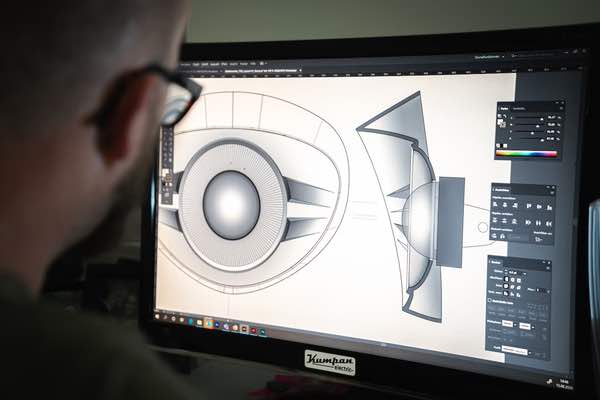In today’s fast-paced world of product development, the design landscape has been entirely revolutionized by technology, including techniques like CAD rendering: 3D visual representations of product designs and prototypes.
CAD rendering merges artistry and engineering by empowering product designers to create virtual prototypes for the physical counterparts they aim to produce. In this post, we shall look closer at the benefits of CAD rendering for product development. We shall also discuss how CAD rendering enhances design visualization and saves time and cost. Here are the details
What Is CAD Rendering?
A computer-aided design rendering, or CAD rendering, involves the creation of visually appealing and realistic digital representations of your product design. CAD rendering takes the help of specialized software and techniques like ray tracing and global illumination to produce lifelike images that mimic the properties of the intended physical product.
The Benefits of CAD Rendering For Product Development
In the world of product development, CAD rendering serves as a connection between the conceptual realm and the realm of tangibility. It allows designers and engineers to communicate their ideas and design choices effectively. CAD rendering enhances design understanding and facilitates effective communication, saving time and costs. Here is an in-depth description of the benefits of CAD rendering in product development.
1. Improved Design Visualization
Unlike two-dimensional sketches or drawings, CAD renting visualizes the product in a three-dimensional space. It offers an immersive experience that allows designers and stakeholders to perceive the design from different angles.
CAD rendering also highlights the design’s intricate details, leaving no room for ambiguity. From the curvature of a car’s frame to the texture of a consumer product, all components are portrayed with great precision.
One of the most prominent features of CAD rendering is the simulation of the product’s physical, material, and surface properties. By having a realistic representation of the product, designers can evaluate design alternatives more effectively.
2. Effective Design Communication
Non-technical individuals can have difficulty understanding the technical specifications mentioned in a 2-D design. CAD rendering bridges this gap by presenting the data in an engaging and easily understandable manner, allowing designers to communicate their design intent to stakeholders.
CAD rendering can showcase the design from multiple angles, demonstrate its functionality and highlight its key features. This representation allows stakeholders, executives, and marketing teams to understand the design more intuitively.
CAD rendering also simplifies the process of feedback and design revisions. Through a visual representation, stakeholders can directly pinpoint areas that require modification and suggest improvements with greater clarity.
3. Cost and Time Saving
CAD rendering reduces the need for physical prototypes and mockups. This is one of the most significant time and cost-saving advantages of CAD rendering, as creating multiple different prototypes can consume a fair amount of resources. The virtual product assessment offered by CAD rendering minimizes the reliance on physical models. By relying on virtual prototypes, designers can explore design variations, evaluate different configurations, and test functionality without the need for physical materials and manufacturing.
This reduction in physical prototyping saves costs associated with materials and production and expedites the design process by eliminating the time required for the fabrication and assembly of physical prototypes.
CAD rendering also facilitates concurrent design and engineering processes. Designers and engineers can work side by side by sharing the virtual representation of the product. This collaboration eliminates handoffs and reduces delays, enabling parallel workflows that significantly compress the product development timeline.
4. Market Testing and Validation
The virtual prototypes created by CAD rendering can be used for market testing and validating the prototypes. Designers can leverage CAD rendering to develop realistic representations of the product that can then be used to gather valuable insights and feedback from target markets.
Virtual prototypes showcase the product’s features, functionalities, and aesthetics to potential consumers, investors, or focus groups. This exposure gives market research participants a visually compelling and accurate representation of the product. This enables designers to collect meaningful data and gauge initial market response before investing in physical production.
Through surveys, interviews, or interactive virtual demonstrations, designers can engage with consumers and capture their impressions of the product. CAD rendering enables the visualization of different design variations, color schemes, or material choices, allowing participants to provide specific feedback on these aspects.
5. Enhanced Marketing and Sales
The visuals created through CAD rendering can be utilized in different marketing materials due to their photorealistic nature. This functionality is a powerful marketing asset for capturing the attention of potential customers and conveying the product’s key features and benefits.
Designers can leverage CAD rendering to create captivating product images for brochures, websites, social media, and other marketing channels. This allows them to highlight the product’s unique design elements, innovative features, and visual appeal in front of the targeted audience and create a positive first impression. CAD rendering enhances the overall marketing efforts by presenting the product as aesthetically pleasing and visually engaging.
Endnote
CAD rendering is a powerful tool that revolutionizes product development, offering numerous benefits across design, communication, cost savings, market validation, and marketing. It allows designers to unlock their creativity and deliver exceptional products that meet the demands of today’s dynamic and competitive market.


